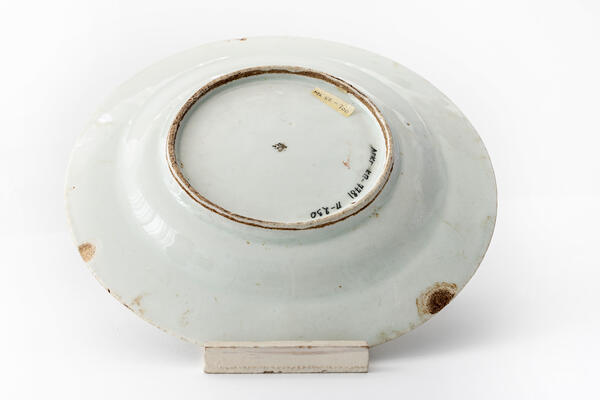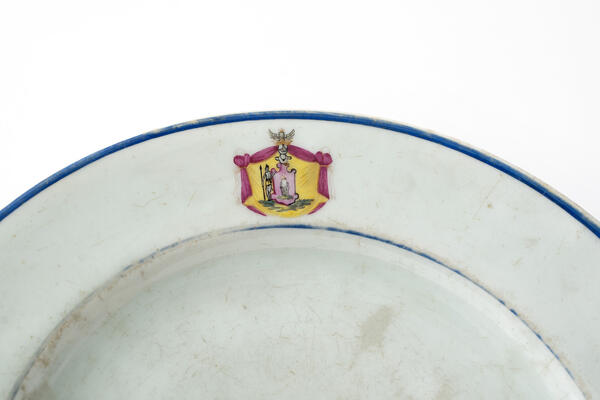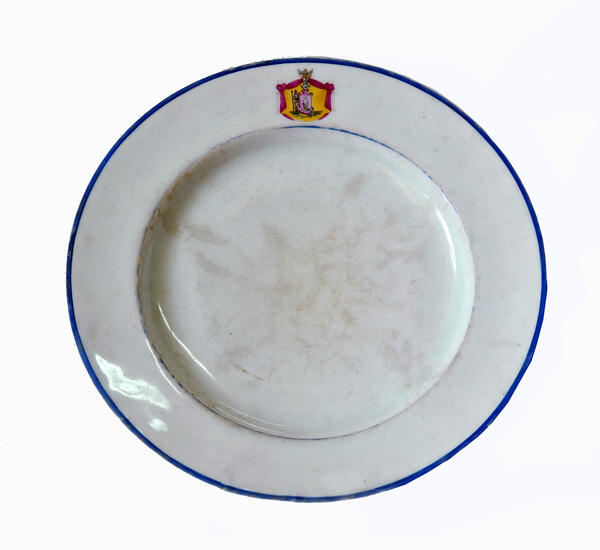Pyotr Vasilyevich
Miturich recalled the time when his wife Vera’s parents were moving to Moscow,
Plate with the Verbitsky coat of arms
We ask them [Vladimir Alexeyevich and Ekaterina Nikolaevna Khlebnikovs] to sell as many things and books as possible and take only the most necessary items with them…
The necessary items were primarily family heirlooms.
Later, May Miturich-Khlebnikov compiled a complete inventory of these memorabilia. Under No. 1 is a porcelain plate with the Verbitsky coat of arms (initially it was mistakenly described to feature “the Khlebnikov coat of arms”). The researcher of Russian futurism Alexander Efimovich Parnis wrote that the coat of arms of the Verbitsky family changed several times and one of its intermediate variants is depicted on the plate.
Velimir Khlebnikov traced his ancestry on his mother’s side to a “prominent military man Stepan Verbitsky”, who served the Russian crown. In the early 18th century, he “came from Poland to be under Russian rule”.
The family revered Nikolai Vasilyevich Gogol. May Miturich-Khlebnikov wrote in his memoirs, “Grandmother [Ekaterina Nikolaevna] read Gogol to me. The chilling, hypnotic horror of ‘Viy’… made me squint and hide my head under the blanket.‘Just like Vitya [Velimir] who also hid from Viy under the blanket, ’ grandma recalled.” Over time, Gogol became Velimir’s favorite writer, and some of his works, including “The Equation of Gogol’s Soul”, “High Holy Day” and “The Death of Palivoda” — were inspired by the classic.
The plate with the coat of arms was once part of a service which is now lost. It was made at the Baranówka Porcelain Factory.
In 1802, large deposits of kaolin, white clay used in porcelain production, were discovered on the left bank of the Sluch River in Volyn. That year, the brothers Mikhail and Frantishek de Mezer set up a factory there. They hired masters from the local population, among them there were many highly skilled serf artists.
For over 40 years, the factory was managed by Mikhail Mezer and his heirs, then it was leased. Under the new managers, production went into decline so much so that the imperial coat of arms was no longer placed on the products — this honor had been given to the factory under Alexander I.
In 1895, the factory was bought by the Sevastopol
merchant and ethnic Greek Nikolai Petrovich Gripari. Under him and his heir
Pyotr Gripari, the factory regained its position: Baranówka porcelain was again
supplied to the Imperial Court as one of the best in Ukraine.




